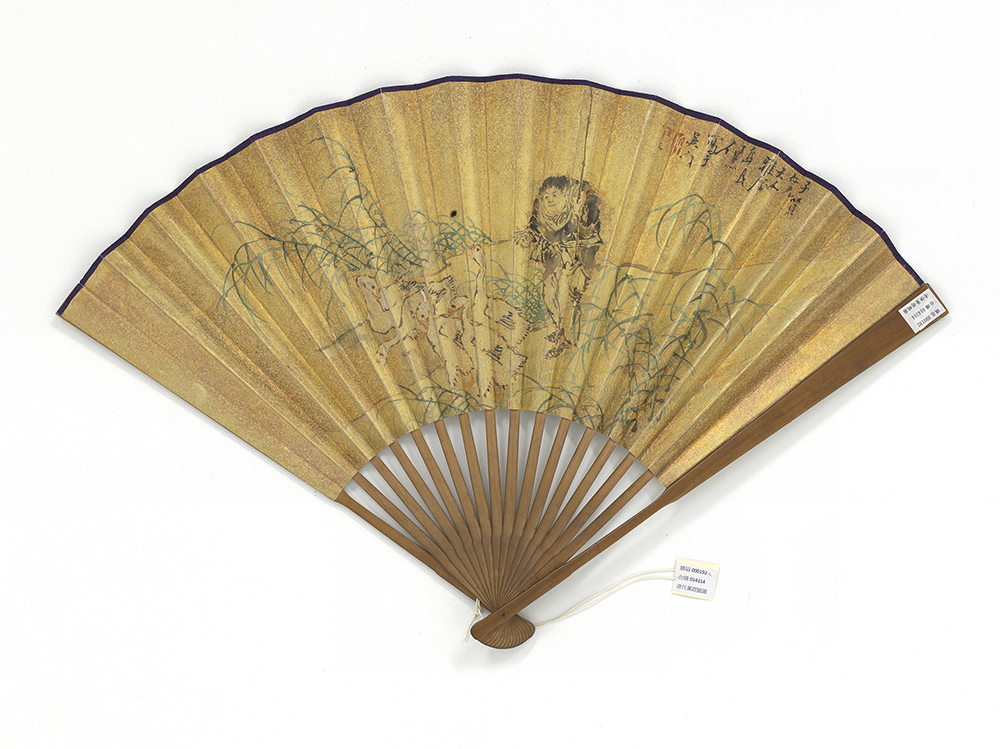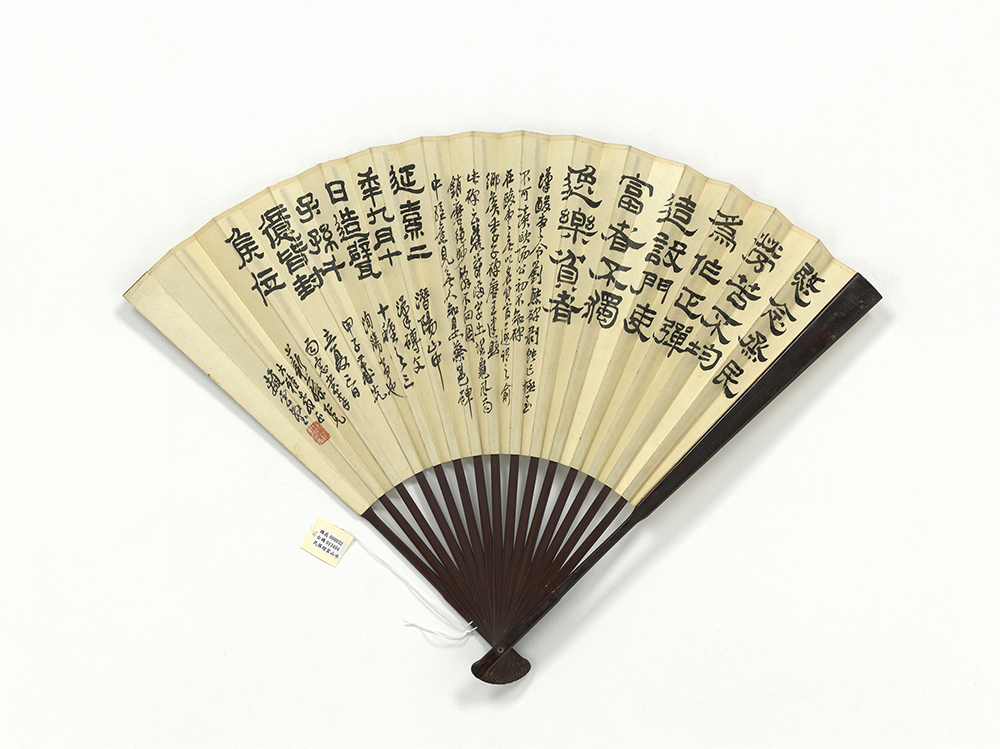During the Qing dynasty, the folding fan was a cultural art form appreciated by the elite and commoners alike. The depiction of auspicious subjects was also enjoyed in this format. Through exchange and cooperation between painters and calligraphers, the trend of collectors commissioning folding fan works continued unabated. Moreover, in the field of calligraphy, the rise of the Stele School led to the use of phrases from stele inscriptions on folding fans, breathing new life into this art form.
Herding Geese
- Ren Xun (1835-1893), Qing dynasty
Mantra for the "Golden Elixir of 400 Characters" in Running Script
- Wang Zaochi (fl. late 19th c.), Qing dynasty
- Folding fan, ink (and colors) on paper, 17.8 x 46 cm
Ren Xun (style name Fuchang), a native of Xiaoshan in Zhejiang, was the younger brother of the famous Shanghai School artist Ren Xiong (1823-1857). In figure painting, Ren Xun studied the methods of his elder brother and created a manner of his own. He was also renowned at the time for his paintings of birds and flowers.
The latter half of Ren Xun's life was spent in Suzhou, and this work is signed, "I write these words for the host, Master Zixian. Done by Fuchang, Ren Xun, in Wumen," referring at the end to another name for Suzhou. In the painting, a youth is shown herding geese, the figure rendered with leisurely brushwork while the vegetation is done using strong brushwork. The geese have a dynamic succinctness imparting a strongly rustic quality to the decorative gold-painted paper. The other side of the fan features a work of calligraphy by Wang Zaochi entitled "Mantra for the 'Golden Elixir of 400 Characters' in Running Script,'" which was done in 1885 and also for "Zixian." Wang Zaochi (style name Zhenzhi), a native of Jiaxing in Zhejiang, was active in the Guangxu reign (1875-1908). He studied medical texts in his youth and was the author of Comprehensive Investigation of Symptoms and Their Causes in ten fascicles.
Two Passages from Han Dynasty Steles in Clerical Script
- Zhao Yunhe (1874-1955), Republican period
Landscape
- Zhao Yunhe (1874-1955), Republican period
- Folding fan, ink on paper, 17.8 x 42 cm
Zhao Yunhe, also named Qi, had the style name Ziyun and was a native of Suzhou in Jiangsu. A student of Wu Changshi (1844-1927), he learned running script calligraphy as well as flower and landscape painting from him, becoming a disciple with a hoary yet elegant manner of his own.
This folding fan features a transcription from Han dynasty steles, the brushwork archaic and solid. The inscription in running script recounts the origins of the stele contents, its style bold and straightforward. Despite the difference between the stele transcription and running script inscription as well as the sizes of the two, they are arranged well on the surface of the fan. The black handle and ribs complement the rich black ink of the calligraphy, providing an aesthetic brimming with simplicity and richness. The other side features a landscape by the same artist with bamboo and a thatched building. The calligraphy and painting on both sides were done in 1924 for "Brother Xinsun."


